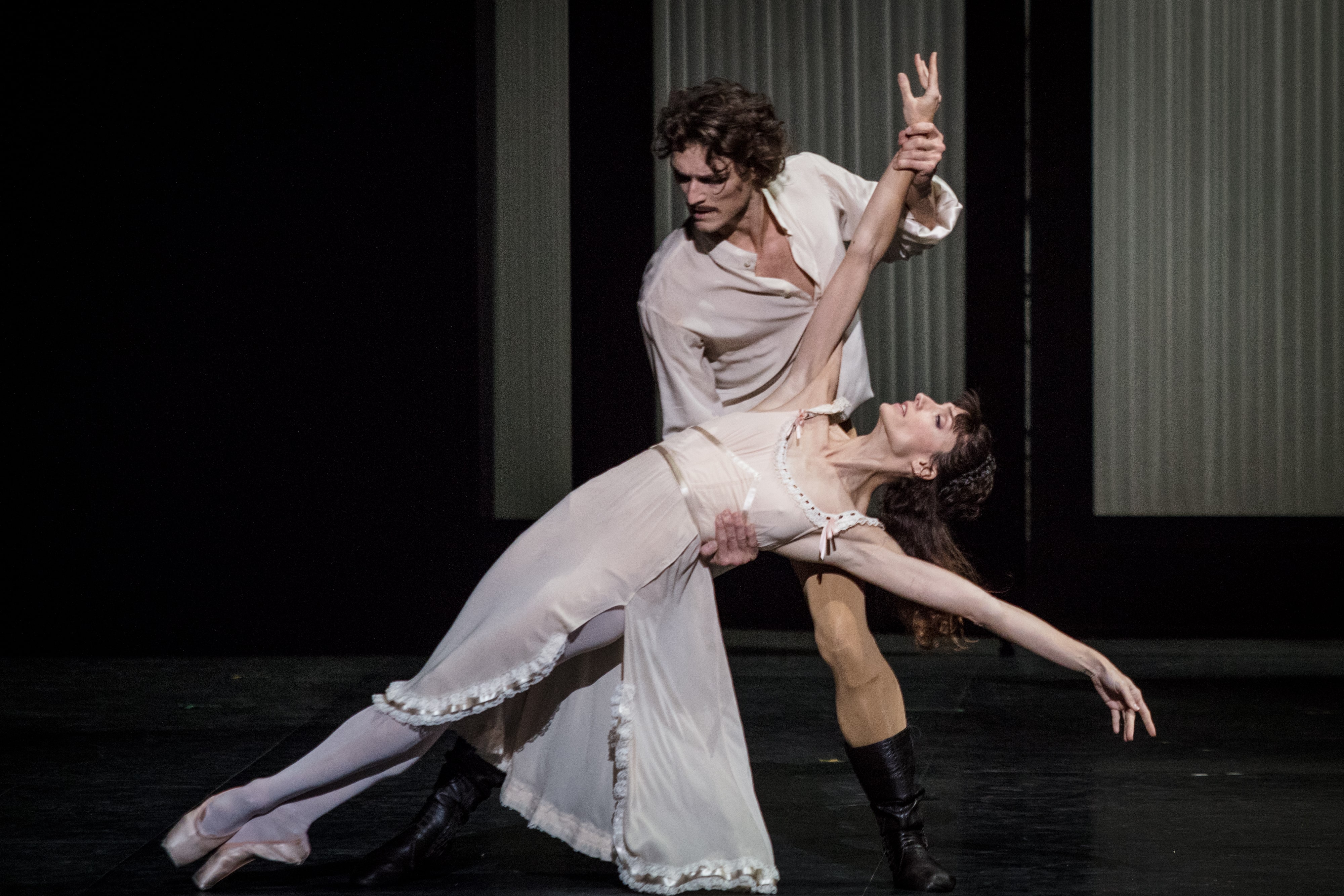
“The most beautiful thing we can experience is the mysterious. It is the source of all true art and science.”
- Albert Einstein
What better than a grand mystery to stoke the fires of creation? A mystery fascinates, excites the imagination, and opens up a multitude of possible versions of an uncertain reality. Is it so surprising, then, to see a brilliant choreographer inspired by a mysterious drama for one of his greatest creations? Mayerling, the title of the ballet we're discussing today, is also the name of the hunting lodge where, on 30 January 1889, the heir to the Austro-Hungarian Empire was found dead. Suicide, murder? Choreographer Kenneth MacMillan has chosen to depict the story of a man crushed by the weight of conventions and duty through dance. A force either liberating or destructive, bound by social codes or driven by passionate freedom, it leads us beyond the mist, seeking to explain the archduke’s final act. This intense, profound interpretation will be performed this season at the Opéra National de Paris.
The mysterious circumstances surrounding the death of the Austro-Hungarian Empire’s heir have filled volumes and remain unclear to this day. Rudolf was found dead with his lover, Mary Vetsera, in his hunting lodge bedroom. Some close to the imperial family, including Empress Eugénie, spoke of murder paired with suicide: threatened by his father, the archduke had decided to leave Mary Vetsera, but she revealed her pregnancy, and the couple then chose to die together. Others have even speculated that Mary and Rudolf were siblings and ended their lives together upon learning of Mary’s pregnancy.
The imperial family did everything possible to hide Mary Vetsera’s presence with Rudolf to protect the dynasty’s image. It was also suggested that the lovers were murdered, citing signs of a struggle on the archduke's body, a forced window, and overturned furniture as evidence. Empress Zita claimed Rudolf was eliminated for refusing to join a conspiracy against his father. Another version suggests that Bismarck ordered the murder due to concerns about Rudolf’s political views on Austria-Hungary and France.
Faced with so many versions, MacMillan chose to depict the suicide of the archduke and his mistress without mentioning a possible pregnancy. The ballet portrays the dissolute life of Prince Rudolf, defying the strict etiquette imposed by the Viennese court. Forced to marry Princess Stephanie of Belgium, for whom he feels nothing, he tries to seduce her sister, Princess Louise, in front of his scandalised in-laws and fiancée. On his wedding night, he mistreats Stephanie before dragging her to a shady tavern. There he meets the young Mary Vetsera, who becomes his secret lover.
After accidentally killing a court member in a reckless shooting during a hunt, Rudolf decides to retreat to Mayerling with some friends and Mary Vetsera. Earlier, he and Mary had agreed to end their lives together. In the room that would be their final refuge, Mary falls into Rudolf’s arms. After one last embrace, he shoots her before taking his own life.
In choosing to portray the archduke’s suicide, the ballet explores the emotions and reasoning behind the lovers’ fatal decision. We see a Rudolf who is untamable yet crushed by obligations he despises. Forced into marriage, he loses himself in brothels to escape his duties. His liberal ideas are constantly rejected by his father, who rebukes him at every turn. In the ballet, he is pressured by his Hungarian friends, advocating for their country’s independence, while the Prime Minister scolds him for supporting their cause through his writings. Torn between duty and desire, slave to his cravings, and devastated by the disappointment he causes those around him, the Rudolf who dies abruptly after a final pas-de-deux with Mary is a man trapped in his own life. MacMillan’s choreography weaves together moments of seduction, despair, and public spectacle. The dance alternates between intimate pas de deux and grand parades, sometimes upholding classical codes only to let them break down in a poignant release, expressing the duality of this character caught between opposing forces.
The ballet’s music comprises a selection of pieces by Franz Liszt, rearranged and structured by composer John Lanchbery to fit the storyline. This neo-classical ballet, with its focus on the central character's psychological complexity, verges on romantic drama, naturally calling for intense music that emphasises the gravity of Rudolf’s tragic fate. In the pieces selected by MacMillan and his arranger, you may recognize works as diverse as the Faust Symphony, Mephisto Waltz, Viennese Evening, and parts of the Twelve Transcendental Etudes.
Lanchbery said, “Generally speaking, I cast a wide net, not only among the vast number of Liszt’s piano works, large and small, early and late, but also within his wonderful orchestral poems, a musical form Liszt himself invented.” These pieces share a common quality: they are among the most theatrical and dramatic in Liszt’s repertoire, perfectly capturing Rudolf’s complex character.
We hope to see you on the 12th of November at the Palais Garnier to discover this neo-classical masterpiece.
Image
Title: Dorothée Gilbert - Hugo Marchand
Copyright: Ann Ray / Opéra national de Paris